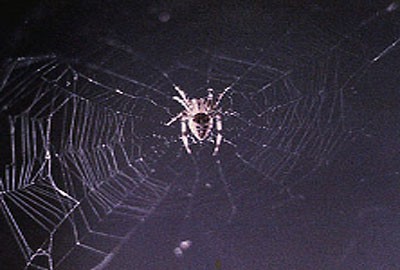
The main feat for any filmmaker is to captivate the audience into accepting a new reality, to entrance us in an illusion. This is particularly difficult for comic book movie producers, as breaking laws of physics risks also breaking the illusion. Animators of The Amazing Spider-Man 2 tried hard to comply with physics — and they succeeded.
For the Love of Comics
Hidden in the back of my home — on the wall of a rarely used space, pressed between glass and encased in cheap, chipped plastic black frames — hang my copies of the 1992 comic book Infinity Gauntlet #1 and the 1982 Fantastic Four® Everyone versus Galactus.
I’ve had these comics since the mid ’90s, when I traded away a few rare Magic the Gathering® cards for them. I framed the comic books and hung them on my bedroom wall. When I went to college, I brought them along. Hanging on cold concrete walls, they survived the nonsense and ruckus of dorm life.
Post-college, they were prominently displayed on the living room wall of my first apartment, which I shared with my then-girlfriend and current wife. These days, she often wonders “When can we take these down?”
But, as any fan of all things Marvel knows: it’s nearly impossible to let go.
Cinematic Golden Age for Comic Book Fans
Right now is the cinematic golden age for comic book fans. Others my age with similar interests are in their professional prime. Some work at desks, others outside, and a few make movies — comic book movies.
Creating a New Reality
In the world of film, there is an unspoken agreement between the filmmakers and the audience. Filmmakers promise to create a new reality from which a compelling story is told. In return, the audience promises to buy into it, at least for a bit.
The agreement is unspoken, because it is largely unknown. A viewer doesn’t knowingly “buy into” a movie, but instead is captured by the illusion. While watching a movie, if you’re not thinking about your life — about bills or groceries, your family or your friends — and if you’re not checking your phone, but are curious about the characters, their actions, and anticipating the direction of the story… then, you are in the illusion.
In my opinion, this is movie magic.
Enticing an audience to accept the illusion of reality in a comic book movie is immensely difficult. The stories are sensational; the characters are impossible. However larger than life the plot and characters may be, I find that this is actually not the most difficult aspect to overcome when engaging an audience. It’s something far simpler, much more basic.
The illusion can be broken quickly and completely by physics.
Basic Understanding of Physics
Everyone has an inherent understanding of basic physical laws. When an object is in motion, we have a relatively accurate expectation of how that object should behave. We do not need to understand Newton’s gravitation equation to know that what goes up, must come down (on Earth at least).
Suppose, for example, that you are standing on a corner, asking every passerby to draw a parabola. It is not a stretch to assume that you would receive an array of some who can and some who can’t. However, if you were to ask the same sample of people to draw the motion of a football thrown by a quarterback, you would likely receive many more accurate drawings of parabolas than when you asked for parabolas themselves.

The Amazing Spider-Man 2 Stays True to the Laws of Physics
A great example of a movie with a high risk of breaking the illusion of reality by breaking the laws of physics is the most recent Spider-Man® film, The Amazing Spider-Man 2.
Spider-Man® is tremendously well-known worldwide. Many could rattle off his back-story and powers easily, if asked. Even if previously unaware of the Spider-Man® plot, an audience member would learn his story and powers as it is told on-screen. (Video hosted on EngineeringTV.com).
This superhero’s powers include super strength, agility, durability, spidey-sense (the ability to sense danger), and web crawling (the ability to crawl on walls and ceilings). Spider-Man® does not possess any power that would allow him to defy the laws of gravity. Even though we know Spider-Man® to be super human and to exist in a reality different than ours, when he launches himself off the top of a building, swinging on a web-line, the audience expects him to rise and fall as any other object would.
If Spider-Man® does not fall, as we would expect him to, or if he doesn’t lose velocity at a normal rate, an audience member will intuitively notice. This misstep could cause us to consider what we saw and compare the movie’s reality with the real world. Even if only for a moment, the viewer is no longer immersed in the film. The illusion is broken.

Spider in its web out in space in 1973. Image credit: NASA
As we learn in the linked video above, in order to avoid breaking the illusion, the animators of The Amazing Spider-Man 2 utilized a custom-built physics tool. This tool helped guide them when deciding the motion of Spider-Man® through his animated 3D reality. It partially constrained the animations to our physical world, so that movements of Spider-Man® were amazing, not distracting.
As a longtime comic book junkie who has enjoyed Marvel’s stories first in comics, then cards, compilations, and now on the big screen, I appreciate and commend the efforts of the The Amazing Spider-Man 2 animators, for all the time, energy, and creativity they put into details, so that we would never notice.
Further Reading
Spider-Man® inspired technology:
- “What’s Stronger Than Steel? Spider Silk“
- “The Military Just Asked Harvard To Make Them a Spider-Man Suit“
Fantastic Four and Spider-Man are registered trademarks of Marvel Characters, Inc.
Magic the Gathering is a registered trademark of Wizards of the Coast LLC Corp.
This post links to content found on EngineeringTV.com which is operated by Penton Media, Inc.COMSOL AB and its subsidiaries and products are not affiliated with, endorsed by, sponsored by, or supported by Penton Media, Inc.



Comments (0)